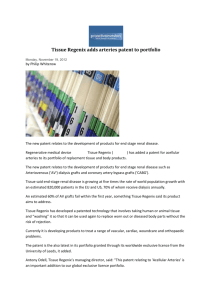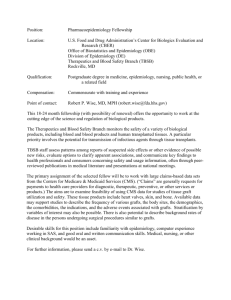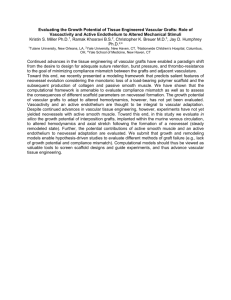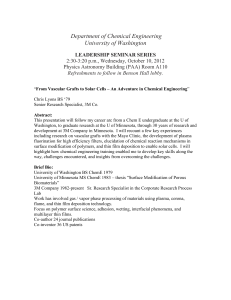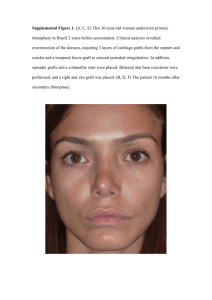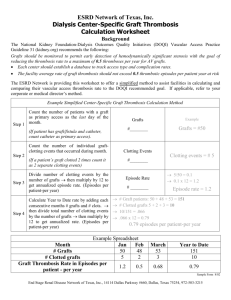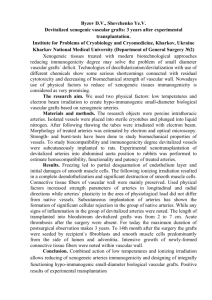graft cells
advertisement
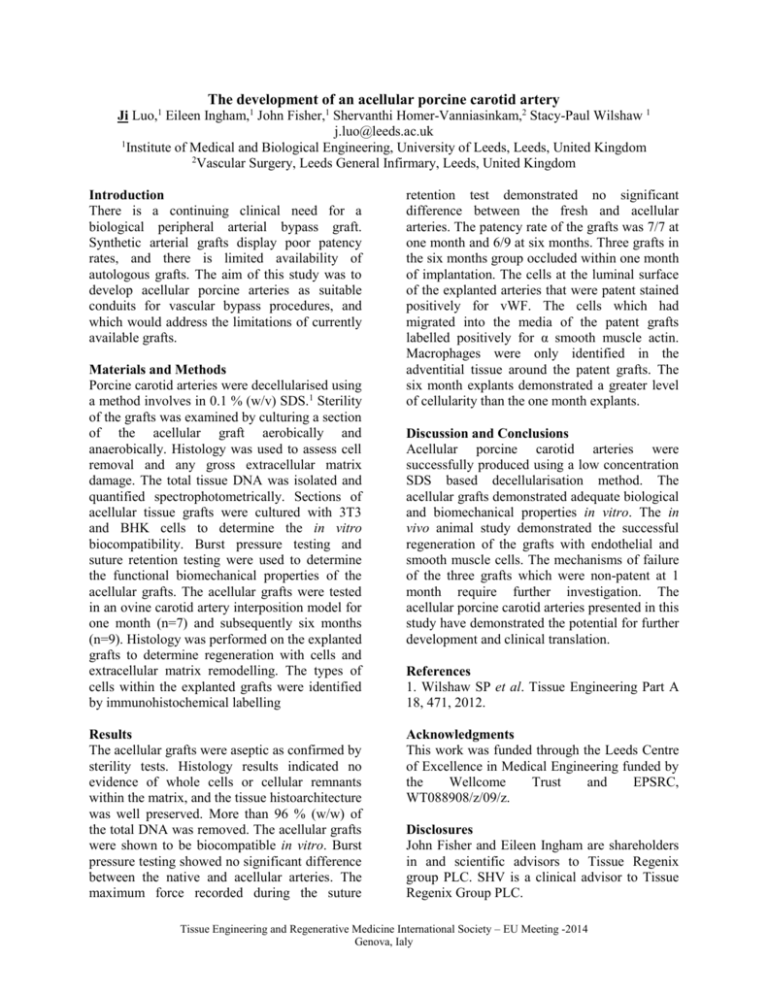
The development of an acellular porcine carotid artery Ji Luo,1 Eileen Ingham,1 John Fisher,1 Shervanthi Homer-Vanniasinkam,2 Stacy-Paul Wilshaw 1 j.luo@leeds.ac.uk 1 Institute of Medical and Biological Engineering, University of Leeds, Leeds, United Kingdom 2 Vascular Surgery, Leeds General Infirmary, Leeds, United Kingdom Introduction There is a continuing clinical need for a biological peripheral arterial bypass graft. Synthetic arterial grafts display poor patency rates, and there is limited availability of autologous grafts. The aim of this study was to develop acellular porcine arteries as suitable conduits for vascular bypass procedures, and which would address the limitations of currently available grafts. Materials and Methods Porcine carotid arteries were decellularised using a method involves in 0.1 % (w/v) SDS.1 Sterility of the grafts was examined by culturing a section of the acellular graft aerobically and anaerobically. Histology was used to assess cell removal and any gross extracellular matrix damage. The total tissue DNA was isolated and quantified spectrophotometrically. Sections of acellular tissue grafts were cultured with 3T3 and BHK cells to determine the in vitro biocompatibility. Burst pressure testing and suture retention testing were used to determine the functional biomechanical properties of the acellular grafts. The acellular grafts were tested in an ovine carotid artery interposition model for one month (n=7) and subsequently six months (n=9). Histology was performed on the explanted grafts to determine regeneration with cells and extracellular matrix remodelling. The types of cells within the explanted grafts were identified by immunohistochemical labelling Results The acellular grafts were aseptic as confirmed by sterility tests. Histology results indicated no evidence of whole cells or cellular remnants within the matrix, and the tissue histoarchitecture was well preserved. More than 96 % (w/w) of the total DNA was removed. The acellular grafts were shown to be biocompatible in vitro. Burst pressure testing showed no significant difference between the native and acellular arteries. The maximum force recorded during the suture retention test demonstrated no significant difference between the fresh and acellular arteries. The patency rate of the grafts was 7/7 at one month and 6/9 at six months. Three grafts in the six months group occluded within one month of implantation. The cells at the luminal surface of the explanted arteries that were patent stained positively for vWF. The cells which had migrated into the media of the patent grafts labelled positively for α smooth muscle actin. Macrophages were only identified in the adventitial tissue around the patent grafts. The six month explants demonstrated a greater level of cellularity than the one month explants. Discussion and Conclusions Acellular porcine carotid arteries were successfully produced using a low concentration SDS based decellularisation method. The acellular grafts demonstrated adequate biological and biomechanical properties in vitro. The in vivo animal study demonstrated the successful regeneration of the grafts with endothelial and smooth muscle cells. The mechanisms of failure of the three grafts which were non-patent at 1 month require further investigation. The acellular porcine carotid arteries presented in this study have demonstrated the potential for further development and clinical translation. References 1. Wilshaw SP et al. Tissue Engineering Part A 18, 471, 2012. Acknowledgments This work was funded through the Leeds Centre of Excellence in Medical Engineering funded by the Wellcome Trust and EPSRC, WT088908/z/09/z. Disclosures John Fisher and Eileen Ingham are shareholders in and scientific advisors to Tissue Regenix group PLC. SHV is a clinical advisor to Tissue Regenix Group PLC. Tissue Engineering and Regenerative Medicine International Society – EU Meeting -2014 Genova, Ialy
